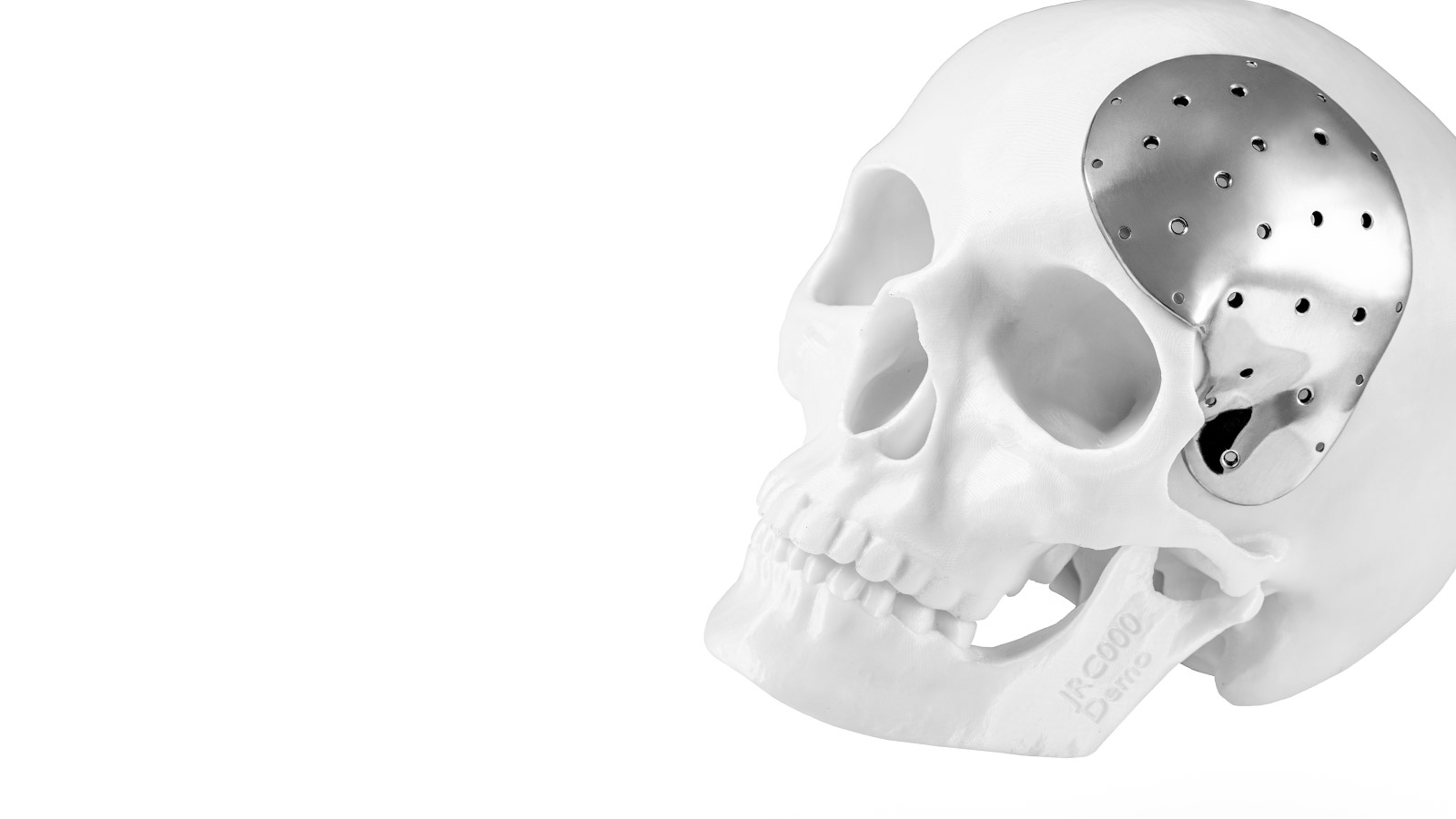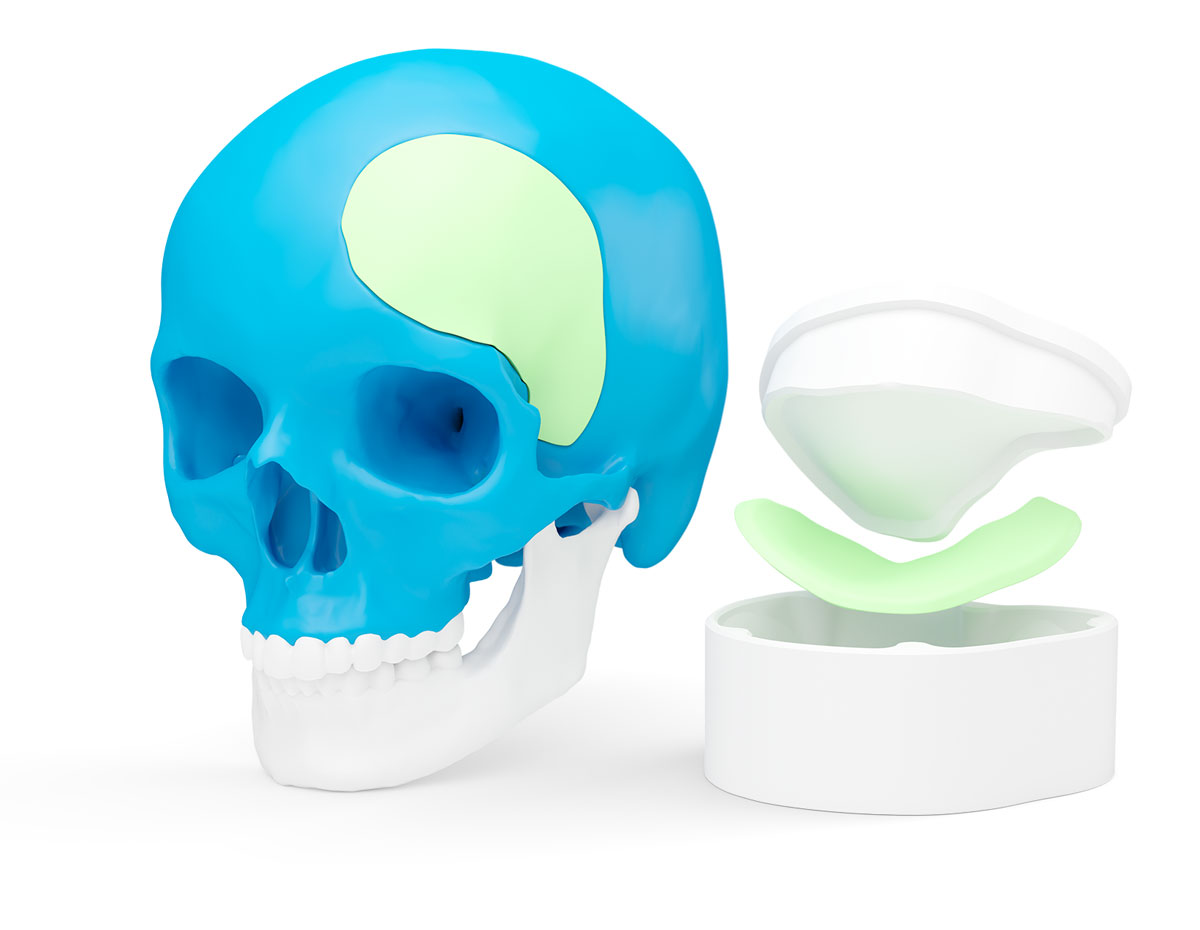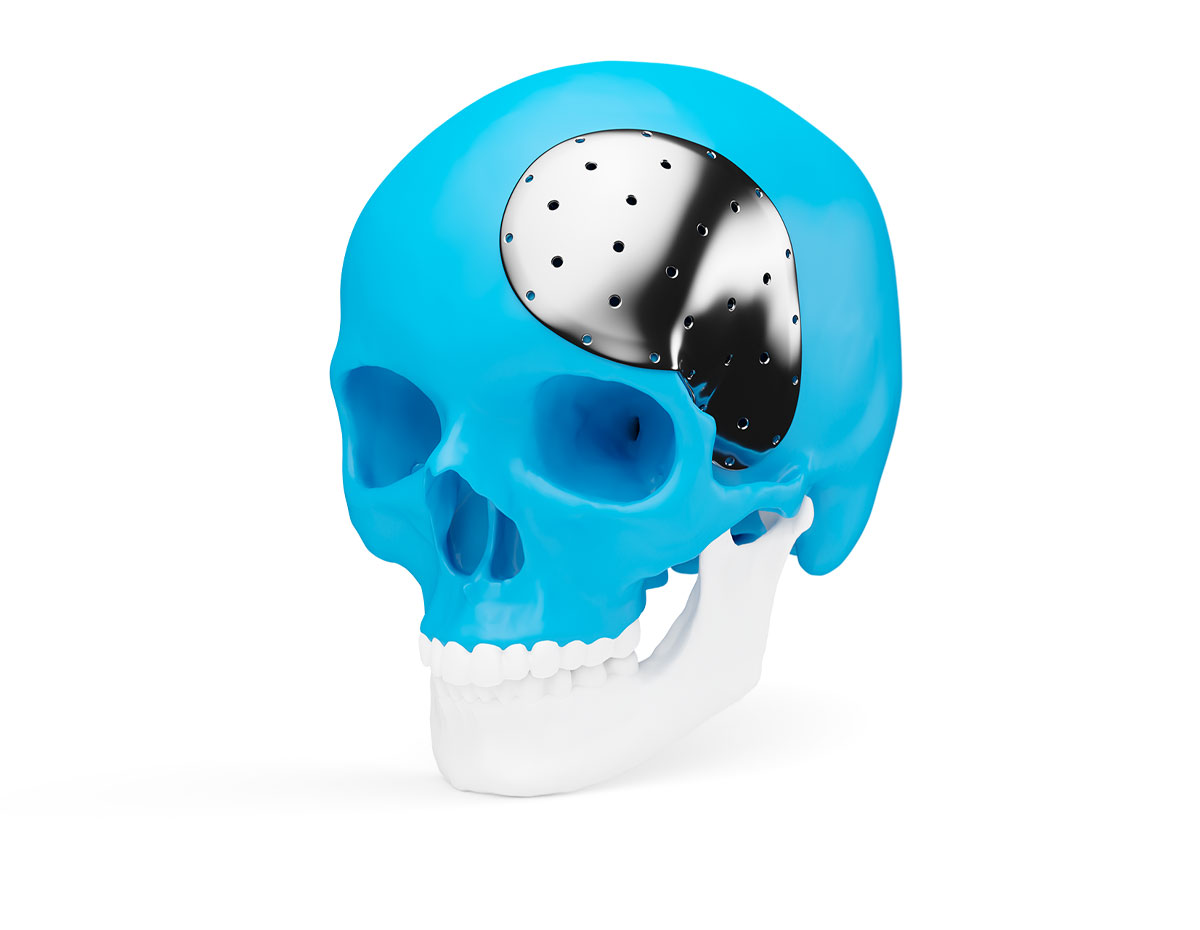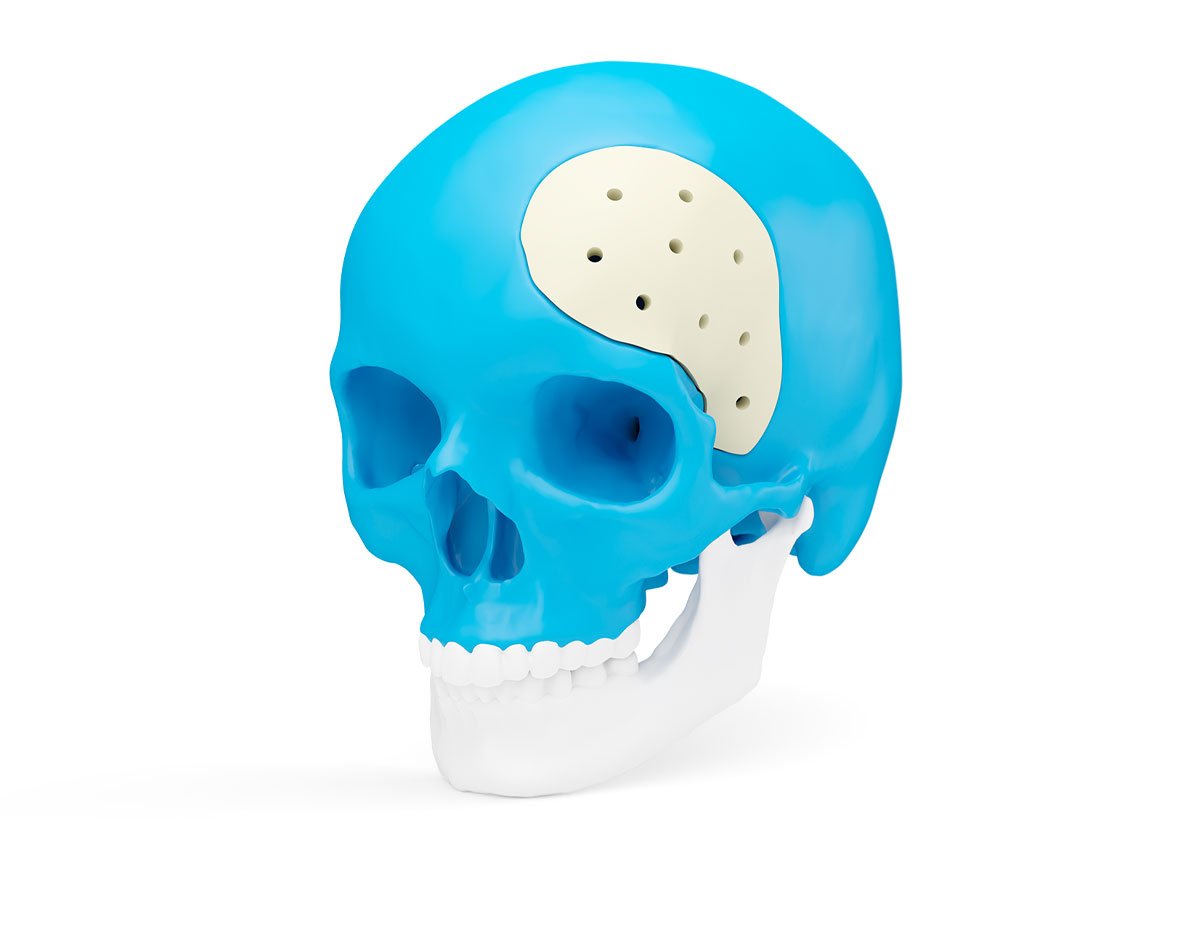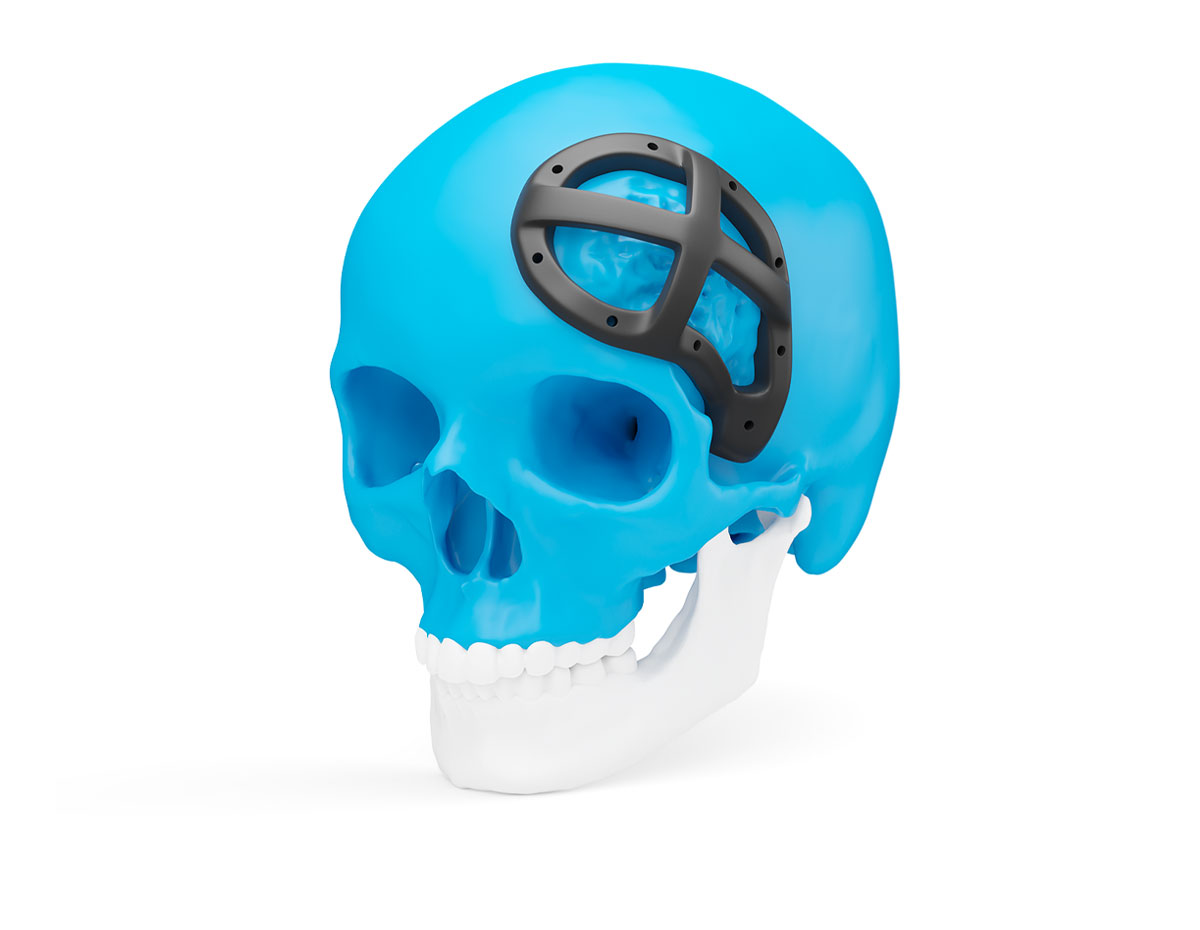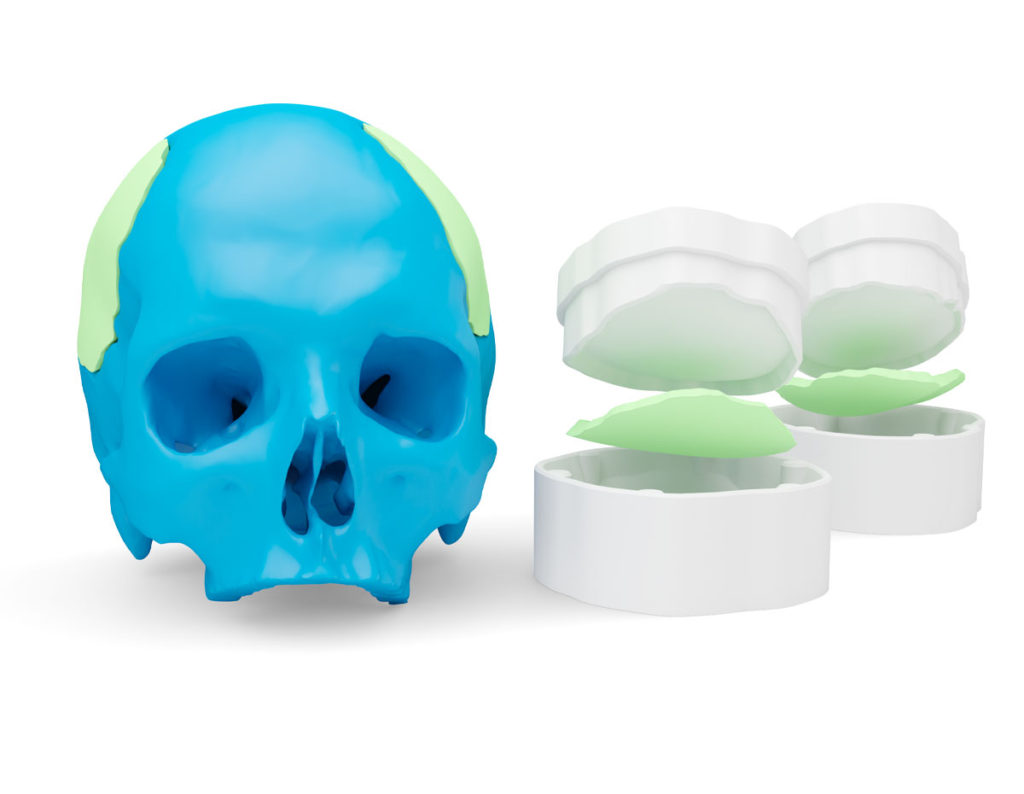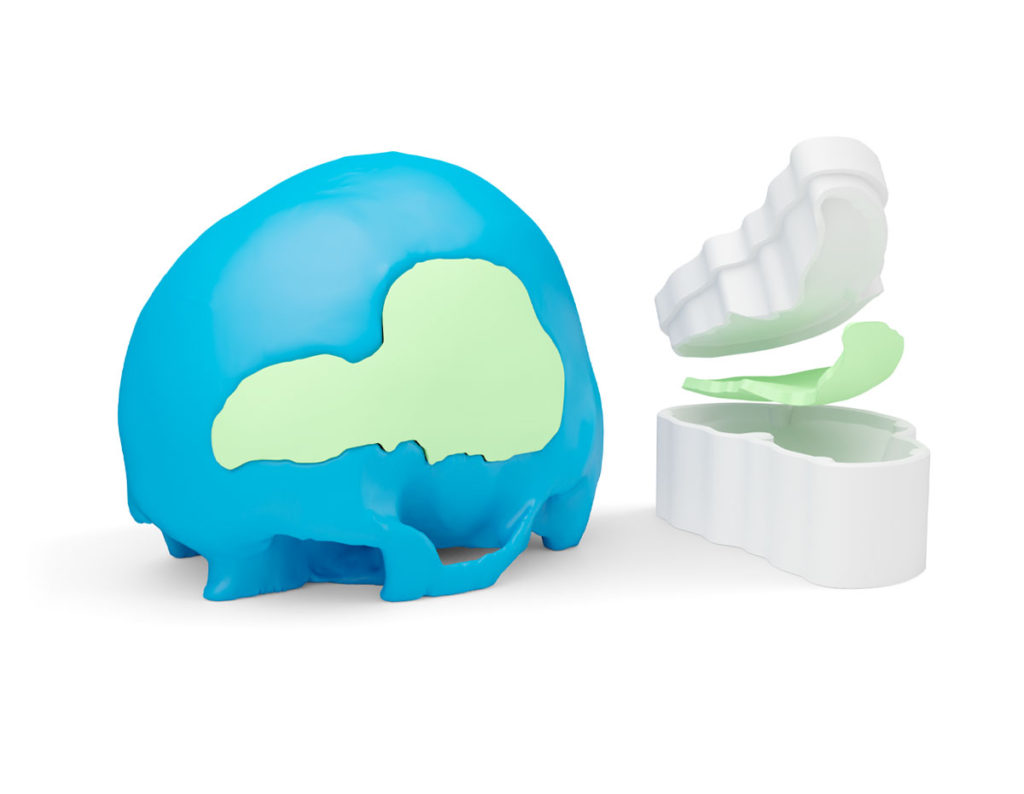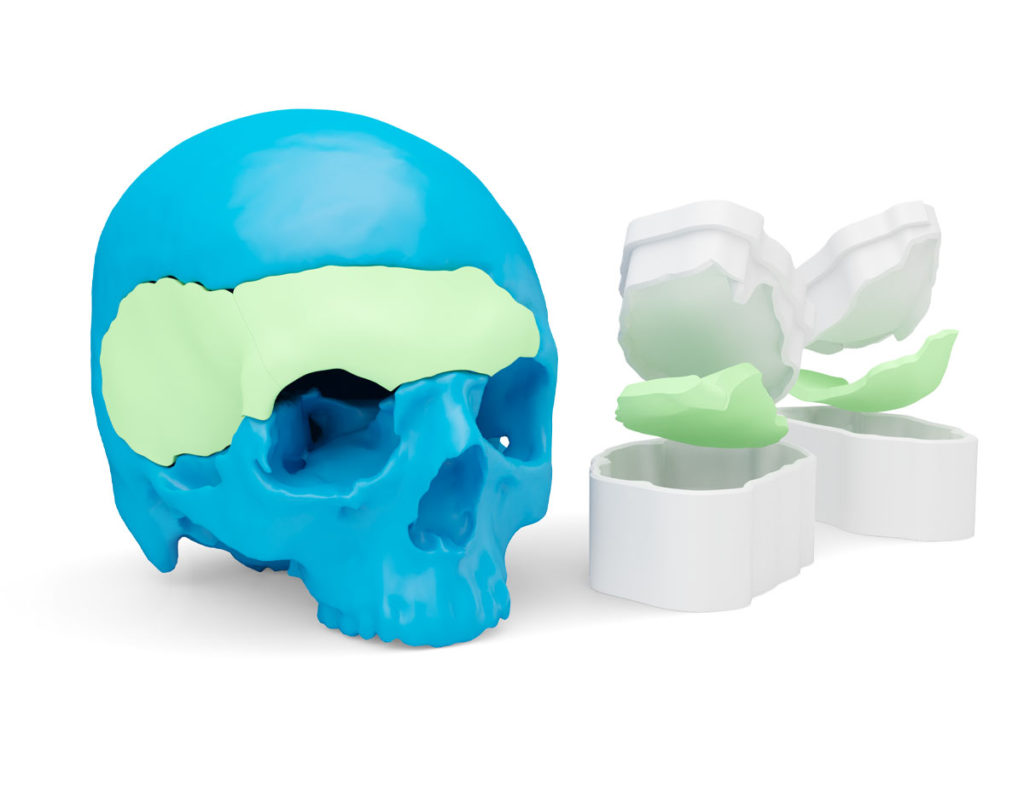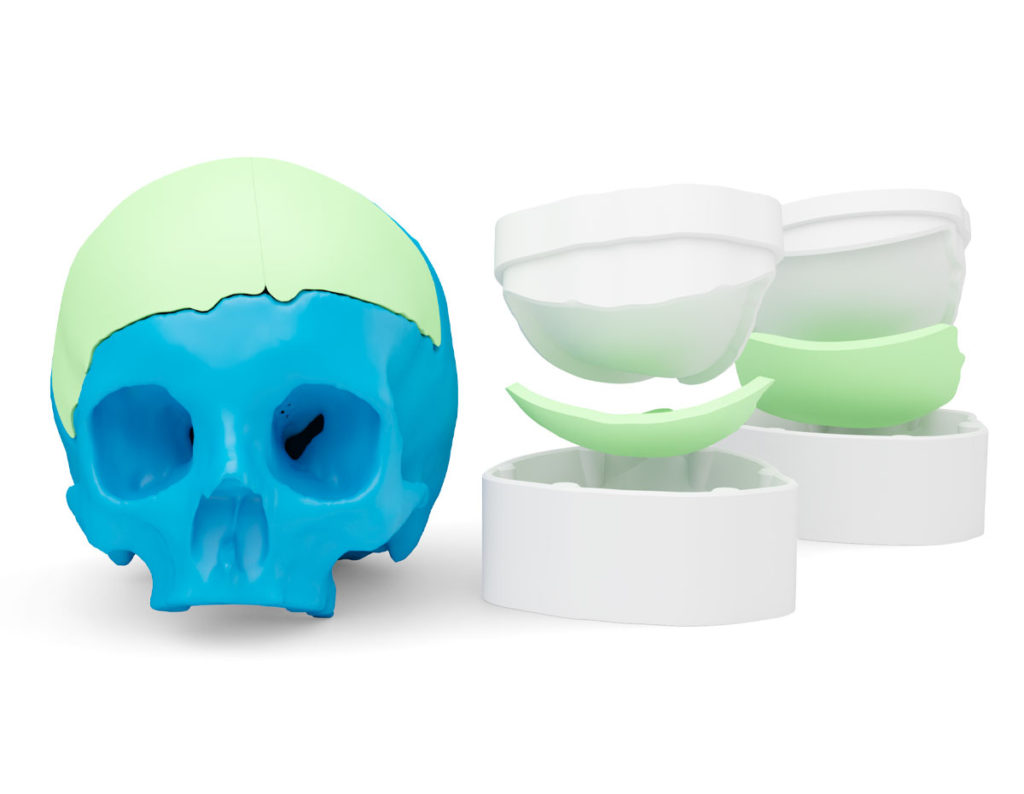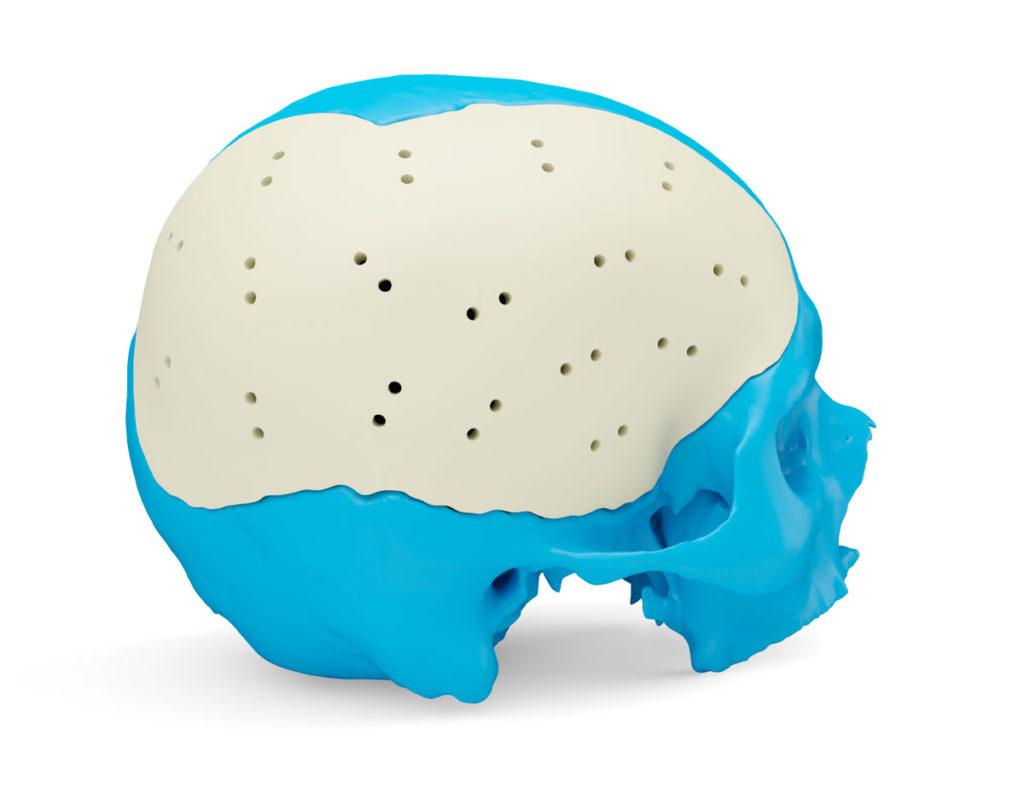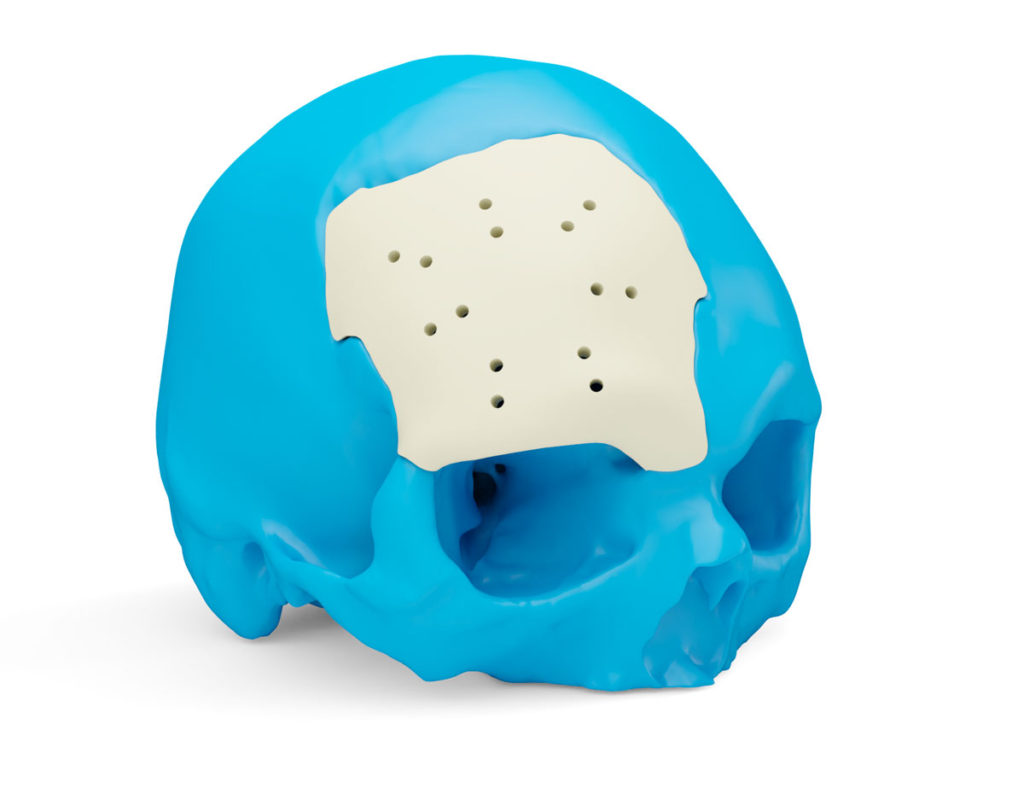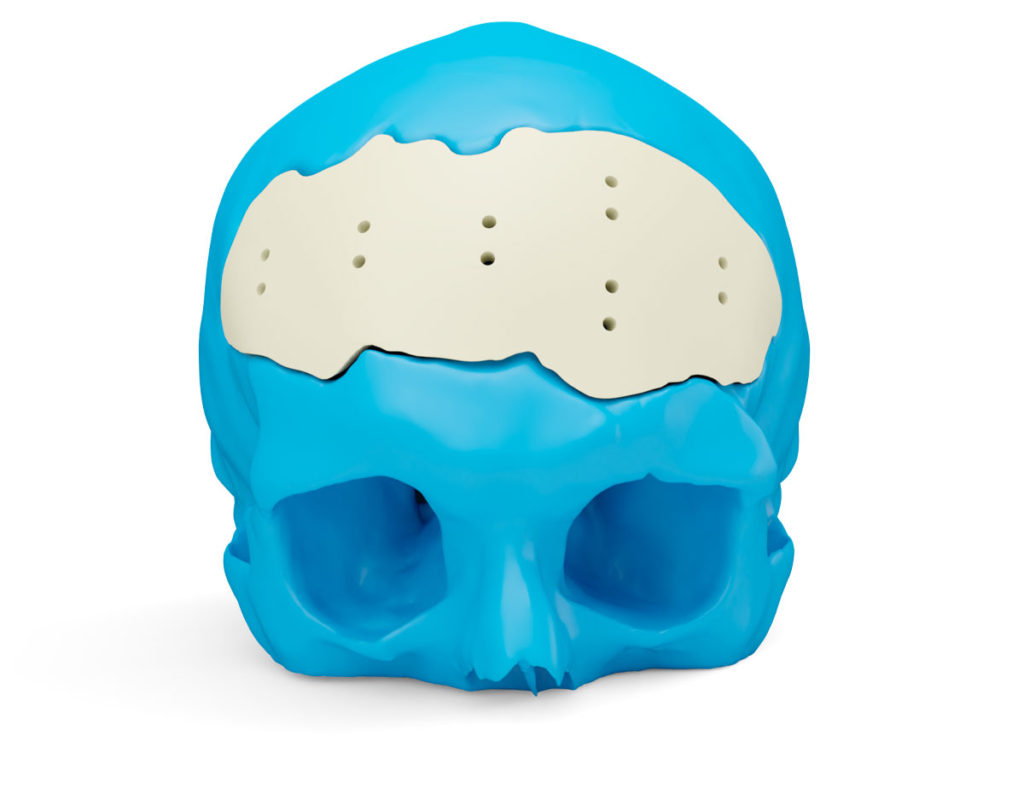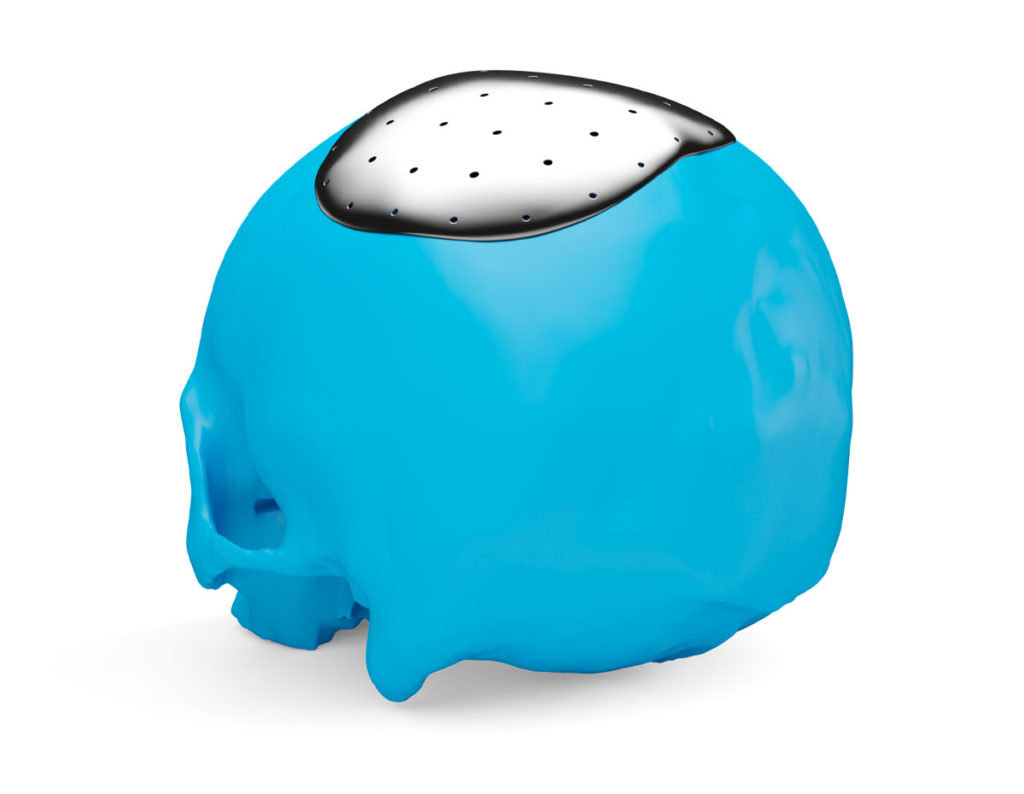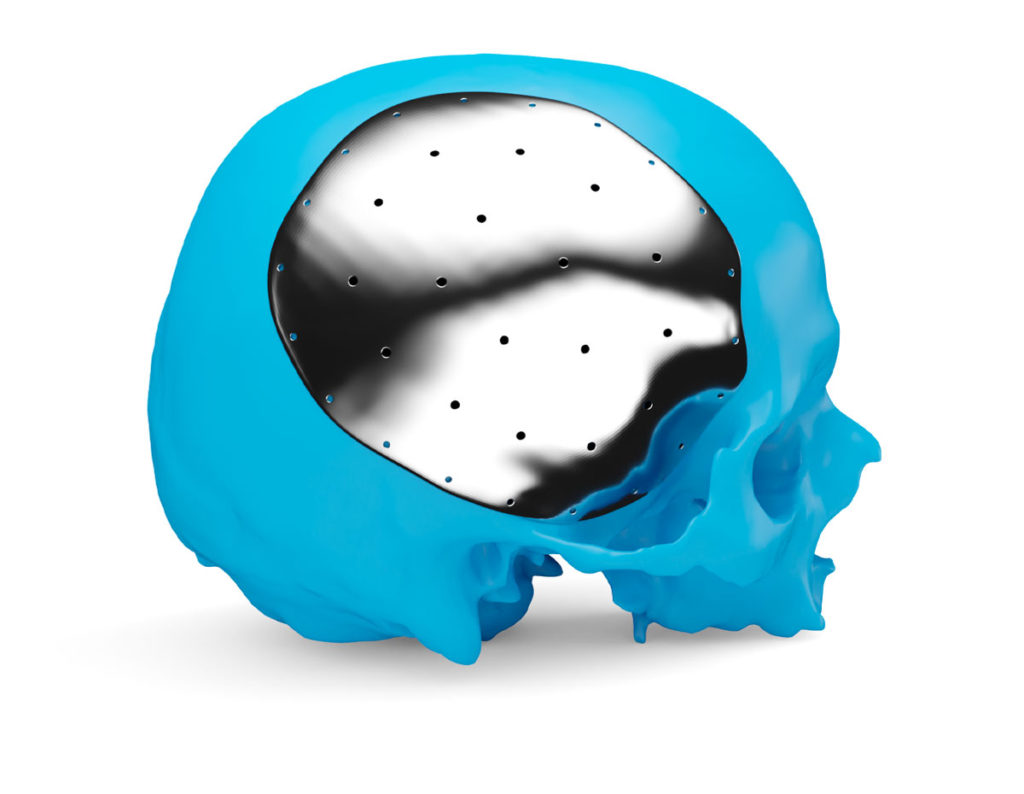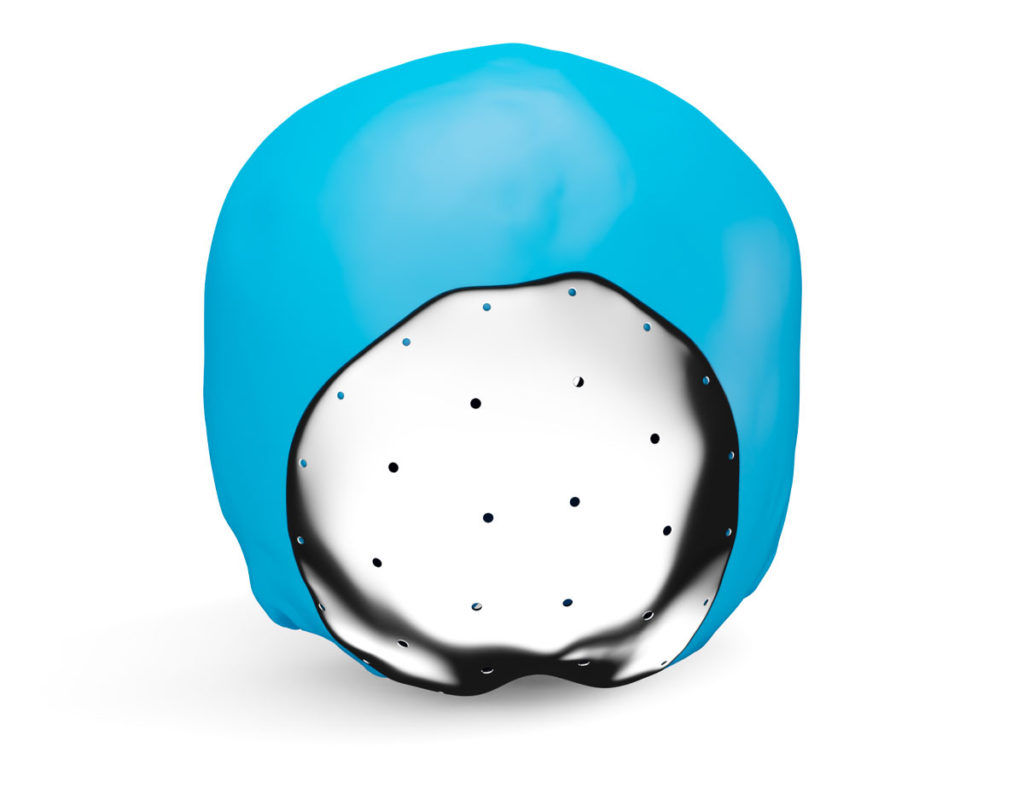Patient-specific cranial implants are individual medical devices to correct cranial defects. Each implant is designed to exactly meet the needs of a particular patient based on 3D image data obtained by CT examination. Different technologies and materials are used for the production of implants, depending on the needs and health condition of each patient. The implants are fixed to the cranium with the aid of standard means, such as: fixation splints, craniofixes, stitches, etc. Cranium-cutting guides are used for exact resection of the cranium in combination with implantation.

